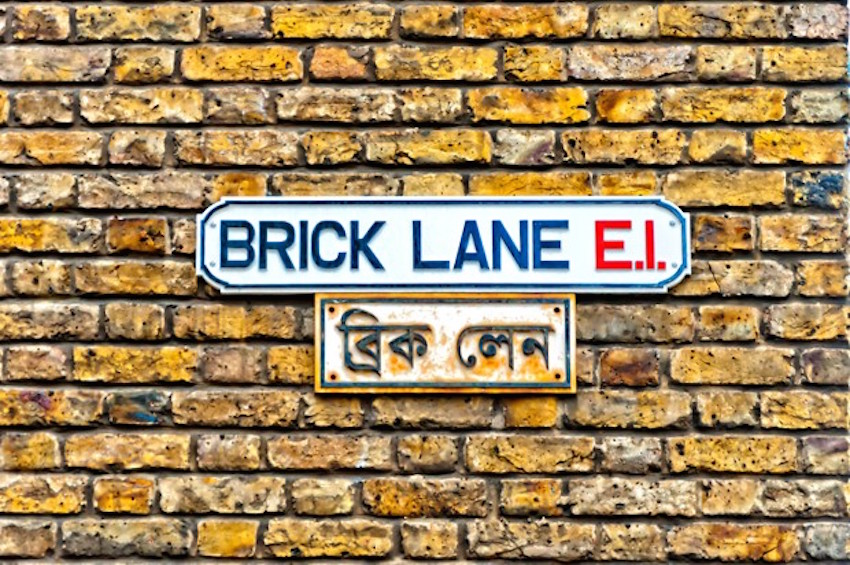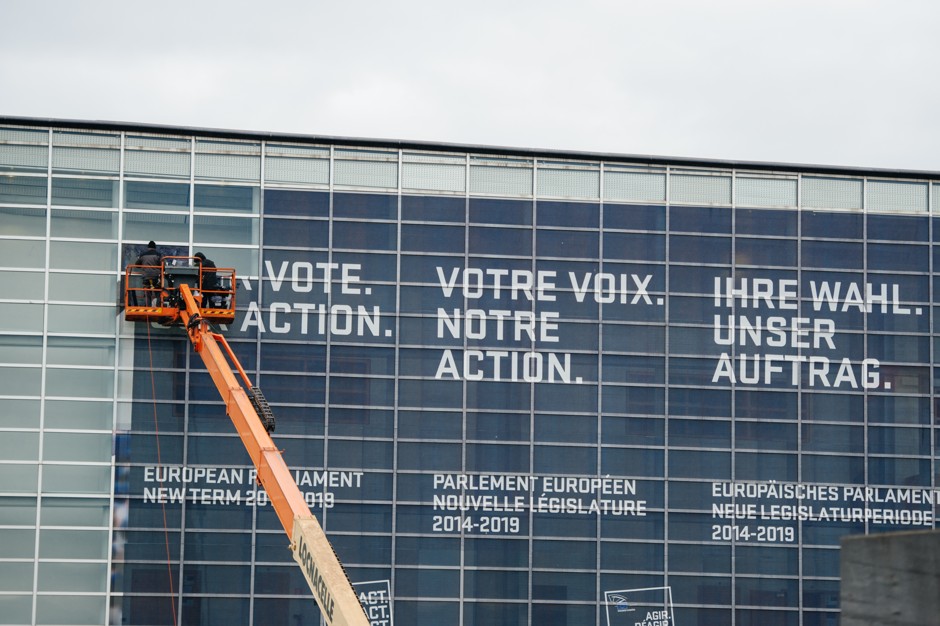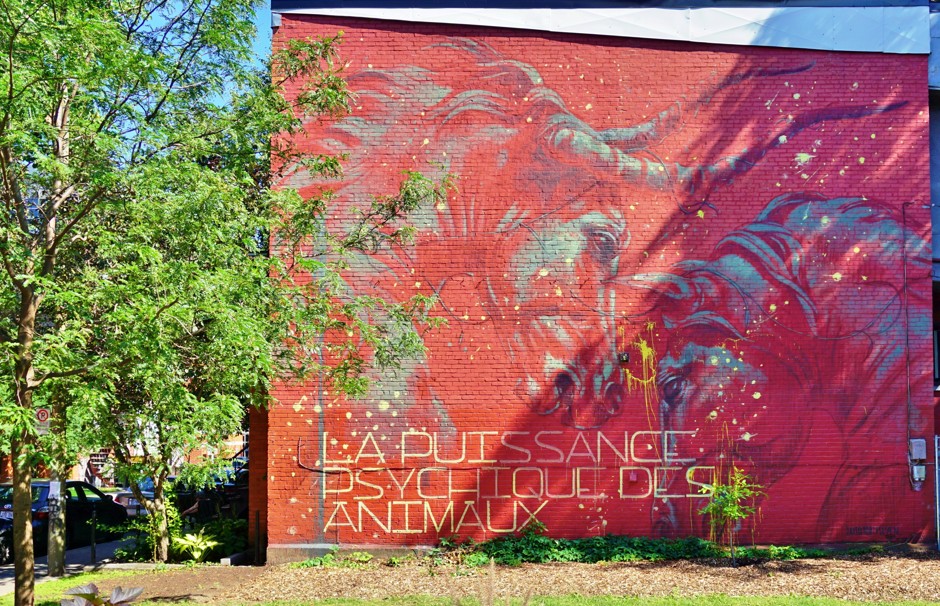Cities that mix different languages are born from the movements of people—but they’re also made, a new book finds.

When you arrive by air in Dublin, you might think from all the Irish signs in the airport that you’ve landed in a bilingual city: not just a city in an officially bilingual country, but a city where you might hear some Irish.
In fact, Irish isn’t very visible nor audible there, despite its protected status. Nonetheless, Dublin is being transformed into a more linguistically diverse place by immigrants from Poland, Romania, China, and elsewhere. In 2010, a full 11 percent of Dubliners reported speaking languages other than Irish or English at home—but none of these appear on signs at the airport.
From observations such as these, what can be said about the vitality of any city’s multilingualism? That was the basic question behind a three-year, multi-city research project by a European consortium called Languages in Urban Communities: Integration and Diversity for Europe (or LUCIDE).
In linguistics, “vitality” usually refers to the long-tem viability of individual languages, but it readily applies to the life of languages in cities too. Is any given city a place where people who speak many languages can live in all their languages? Is speaking, reading, or at least recognizing many languages central to being in that city? Or is it a place that tends toward monolingual conformity?
From our partners:
Researchers looked at a diverse set of 18 cities (13 in Europe, four in Canada, and one in Australia). They included cities located at international crossroads or on borders (such as Strasbourg, France, and Limassol in southern Cyprus); cities with large bilingual populations (such as Montreal, the largest French-speaking city after Paris); cities with long histories of multilingualism (such as Rome and Utrecht); those whose growth over time has been largely due to immigrants (such as Madrid, Melbourne, and London); and those that have become multilingual relatively recently (such as Athens, Dublin, and Oslo).Individual reports on these cities were published in 2014.
Here are some takeaways from The Multilingual City: Vitality, Conflict, and Change, a newly published book that analyzes all the LUCIDE reports:
Don’t count the languages
We’re used to hearing about towns or schools where more than 100 languages are spoken. But such figures are more likely an indication of a community’s willingness to brand itself as tolerant and cosmopolitan, and don’t say much about whether or not those languages are actually used or how those speech communities are treated.

In reality, very few local governments or organizations have the resources to be fully operative in a dozen languages, much less a hundred, so saying that a city or community has 100 languages is probably pointing to all the co-existing but non-overlapping monolingual communities in a place. A better measure of vitality is to look for interaction between linguistic communities and to measure inhabitants’ attitudes about linguistic diversity.
For example, one Irish speaker in Dublin described speaking it on the phone, then being accosted by another person, also Irish, who said in English that she was sick of newcomers taking all the jobs (the implication being that the woman on the phone was one of them). The eavesdropper didn’t recognize the language being spoken as Irish—even though she’d likely studied it in school, where it’s a compulsory subject.
Multilingualism and plurilingualism are different
“Multilingualism” is a tricky term when applied to cities. Is it referring to the presence of residents who speak multiple languages, or is it referring to a multiplicity of monolingual communities? Seeking to establish some clarity, LUCIDE distinguishes between multilingualism as “the co-existence of many languages in a society” and plurilingualism as “the capacity of an individual to communicate in two or more languages.”
“This means one could have a multilingual city of plurilinguals, as well as a multilingual city of monolinguals. A vital multilingual city is one where multilingualism is sustainable and plurilinguals can thrive.”
Look at the signs—sometimes
A city’s multilingualism can be more visible in its Little Italies and Chinatowns, but often these are more for the benefit of tourists than locals. In Toronto, new immigrant neighborhoods are more likely to be in outer suburbs than in the downtown areas. “The Greektown is not Greek, Chinatown is not Chinese,” the city planning scholar Sandeep Agrawal is quoted saying in the Toronto city report. “They are just ethnic business enclaves where you go, eat, play, have fun and go home.”
In several cities, the language represented on signs is policed. Perhaps most famous are the Montreal “language police,” who measure words on signs to ensure the French part of the sign is larger, as required by law. In Strasbourg, French is mandatory but the law doesn’t stipulate the size of the French text, so advertisements in English often contain asterisks pointing to French translations printed at the bottom.
Look at the trash, the posters, and the graffiti
Most of the graffiti in the 18 cities studied was in English (though in Varna, Bulgaria, local artists had been promoting the use of Cyrillic). This speaks to the English language’s durable associations with pop culture, youth, and the cosmopolitan. Other researchers measured multilingual vitality in a place by looking at posters and trash—the presence of other languages on detritus tells you who might have passed through an area unseen.

However, “Most city dwellers do not pay much attention to the languages they see and hear around them,” write Lorna Carson and Lid King in the book’s introduction. (Carson is a scholar of multilingualism at Trinity College Dublin; King was National Director for Languages for England from 2003 to 2011.) The life of language in the city is as much a matter of what’s not seen and heard as what is. In some cities, certain speech communities are made invisible by attitudes and policies, and in most cities, different languages are accorded different levels of status.
Multilingualism as reality vs. its ideal
The perspective of the LUCIDE project is decidedly European, which means that language diversity in the city is seen as a resource to be cultivated, not as a barrier or problem to be solved. Multilingualism is vital when it’s “a means of allowing citizens to flourish in their private and public lives, to maintain and develop their personal language repertoires, and to fulfill their full potential as citizens in the complex heterogeneous space that is the multilingual city,” Carson and King write.
But the European ideal isn’t universal even in Europe, where some languages such as Romani and Arabic are ignored or even repressed, and the communities that speak them are marginalized. Valued languages tend to be European; less valued languages are spoken by indigenous and immigrant communities.
The authors also acknowledge the rise of conservative nationalism that sees language diversity as a threat to social cohesion. Even though all of the cities studied officially consider themselves multilingual, and many individuals who live in them are plurilingual, the vitality of their multilingualism needs to be encouraged, protected, and preserved through policies (such as access to education in mother tongues) and services (such as translation and interpretation support). Merely promoting lots of languages to outsiders isn’t enough.
The future of multilingualism is the city
Cities are where the future of multilingualism will play out, because they’re already stages for tensions between localities and nations, between private and public spaces, and between individual neighborhoods and the city as a whole.
The cities of antiquity were easily, almost effortlessly multilingual, and linguistic tolerance was a natural part of urban life. But the sustainability of multilingualism in modern cities is endangered by the linguistic legacy of nationalism, which sees citizens of a nation as monolingual speakers of specific varieties of a single language. Otherwise, their loyalties can be viewed with suspicion.
“The reason we talk about pluralism in the city as though it is disrupting something,” says the sociolinguist Joe Lo Bianco, “is because we have normalized the idea of that ‘something’ being the national state.” (All 18 LUCIDE cities are subject to the language policies and attitudes of the nations in which they’re based.)
The future of multilingualism is not European
My own conclusion after reading the book: Multilingual cities naturally happen because social diversity results from large populations of mobile people, but to a greater degree, they’re made. For many reasons, the vitality of multilingualism in the world’s cities—not just Europe’s, but those in other countries and regions as well—is far from guaranteed. The next step for understanding multilingual cities is to step outside the European worldview to see how cultural viewpoints elsewhere understand and express the value of multilingualism.
This feature originally appeared in Citylab.


















